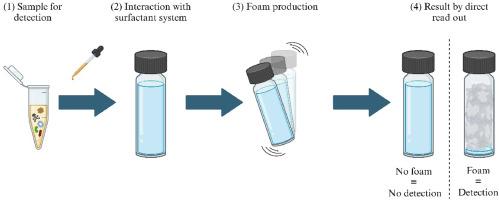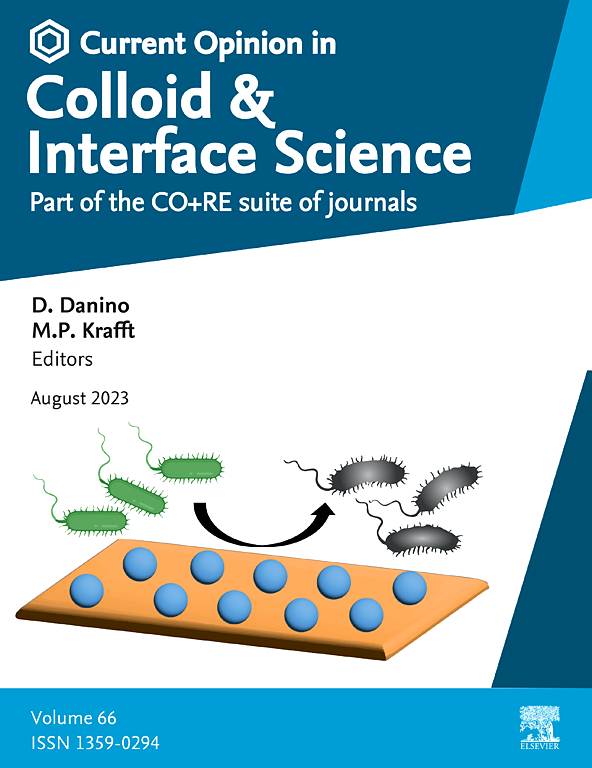How to use stimuli-responsive soft materials for detection?
IF 7
2区 化学
Q1 CHEMISTRY, PHYSICAL
Current Opinion in Colloid & Interface Science
Pub Date : 2024-09-14
DOI:10.1016/j.cocis.2024.101860
引用次数: 0
Abstract
The growing demand for rapid, cost-effective, and user-friendly detection methods has driven advancements in “stimuli-responsive soft materials” for sensor development. Many examples of complex and liquid crystals emulsions can be found demonstrating their application for the detection of bacteria, virus, enzyme, or specific molecules. However, despite frequent comparisons between emulsions and foams, the exploration of liquid foams for sensor applications remains limited. Paradoxically, foam-based sensors for fetal lung maturity were developed in the 1970s, before the emergence of more sophisticated detection methods. Here, we describe some examples of soft interfaces used as sensor to detect biomarkers, enzymes, and bacteria, with a strong emphasis on foam. We demonstrate how to use the foamability and foam stability as read-out mechanism. We discuss approaches developed for complex emulsions and liquid crystals, highlighting their potential adaptation to liquid foams.

如何使用刺激响应软材料进行探测?
对快速、经济、方便的检测方法的需求日益增长,推动了用于传感器开发的 "刺激响应软材料 "的进步。许多复杂的液晶乳液应用于细菌、病毒、酶或特定分子的检测。然而,尽管经常对乳液和泡沫进行比较,但对液态泡沫传感器应用的探索仍然有限。矛盾的是,基于泡沫的胎肺成熟度传感器是在 20 世纪 70 年代开发的,当时还没有出现更先进的检测方法。在此,我们介绍了一些用作传感器检测生物标记物、酶和细菌的软界面的例子,重点是泡沫。我们展示了如何利用泡沫性和泡沫稳定性作为读出机制。我们讨论了针对复杂乳液和液晶开发的方法,强调了这些方法适用于液态泡沫的潜力。
本文章由计算机程序翻译,如有差异,请以英文原文为准。
求助全文
约1分钟内获得全文
求助全文
来源期刊
CiteScore
16.50
自引率
1.10%
发文量
74
审稿时长
11.3 weeks
期刊介绍:
Current Opinion in Colloid and Interface Science (COCIS) is an international journal that focuses on the molecular and nanoscopic aspects of colloidal systems and interfaces in various scientific and technological fields. These include materials science, biologically-relevant systems, energy and environmental technologies, and industrial applications.
Unlike primary journals, COCIS primarily serves as a guide for researchers, helping them navigate through the vast landscape of recently published literature. It critically analyzes the state of the art, identifies bottlenecks and unsolved issues, and proposes future developments.
Moreover, COCIS emphasizes certain areas and papers that are considered particularly interesting and significant by the Editors and Section Editors. Its goal is to provide valuable insights and updates to the research community in these specialized areas.

 求助内容:
求助内容: 应助结果提醒方式:
应助结果提醒方式:


